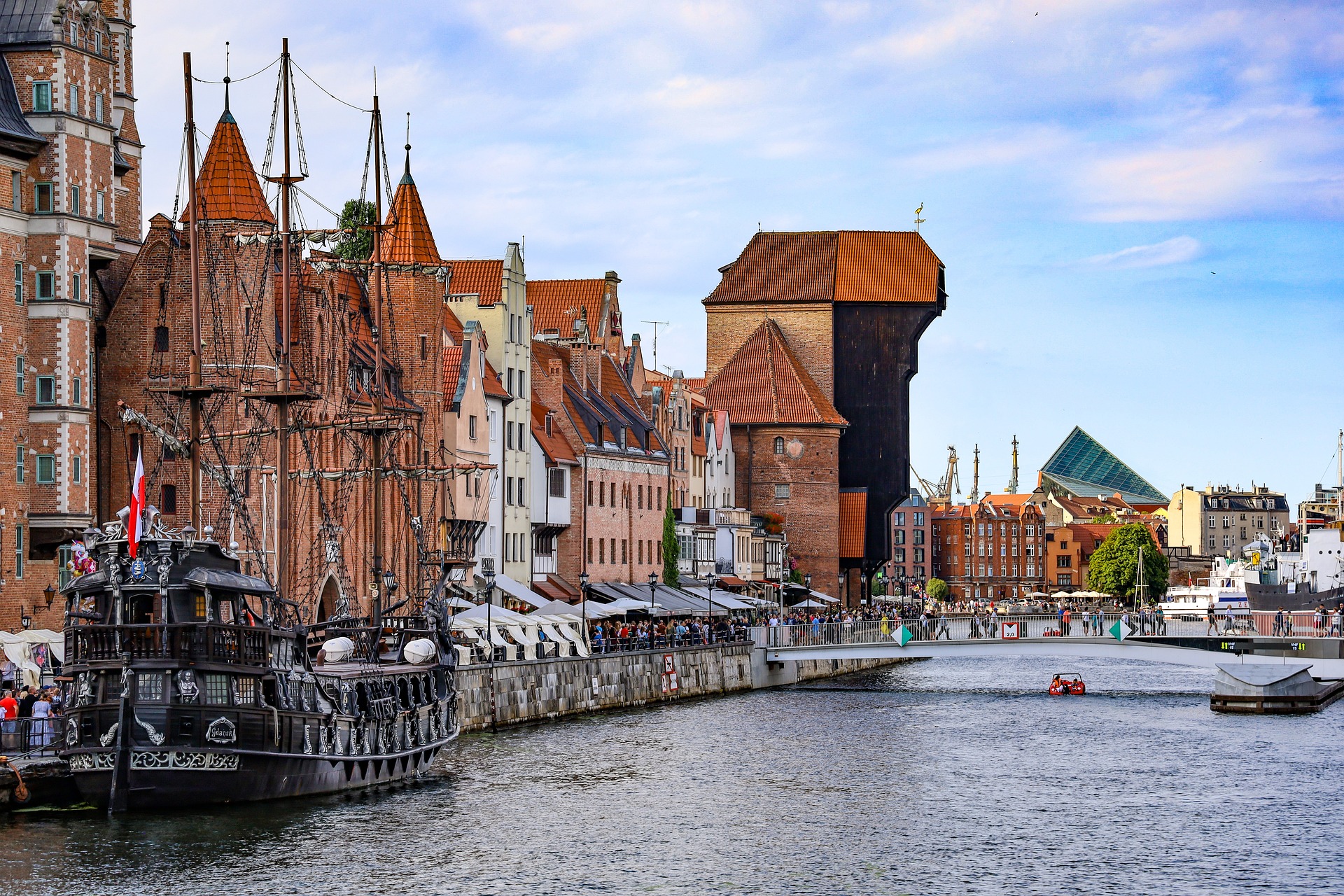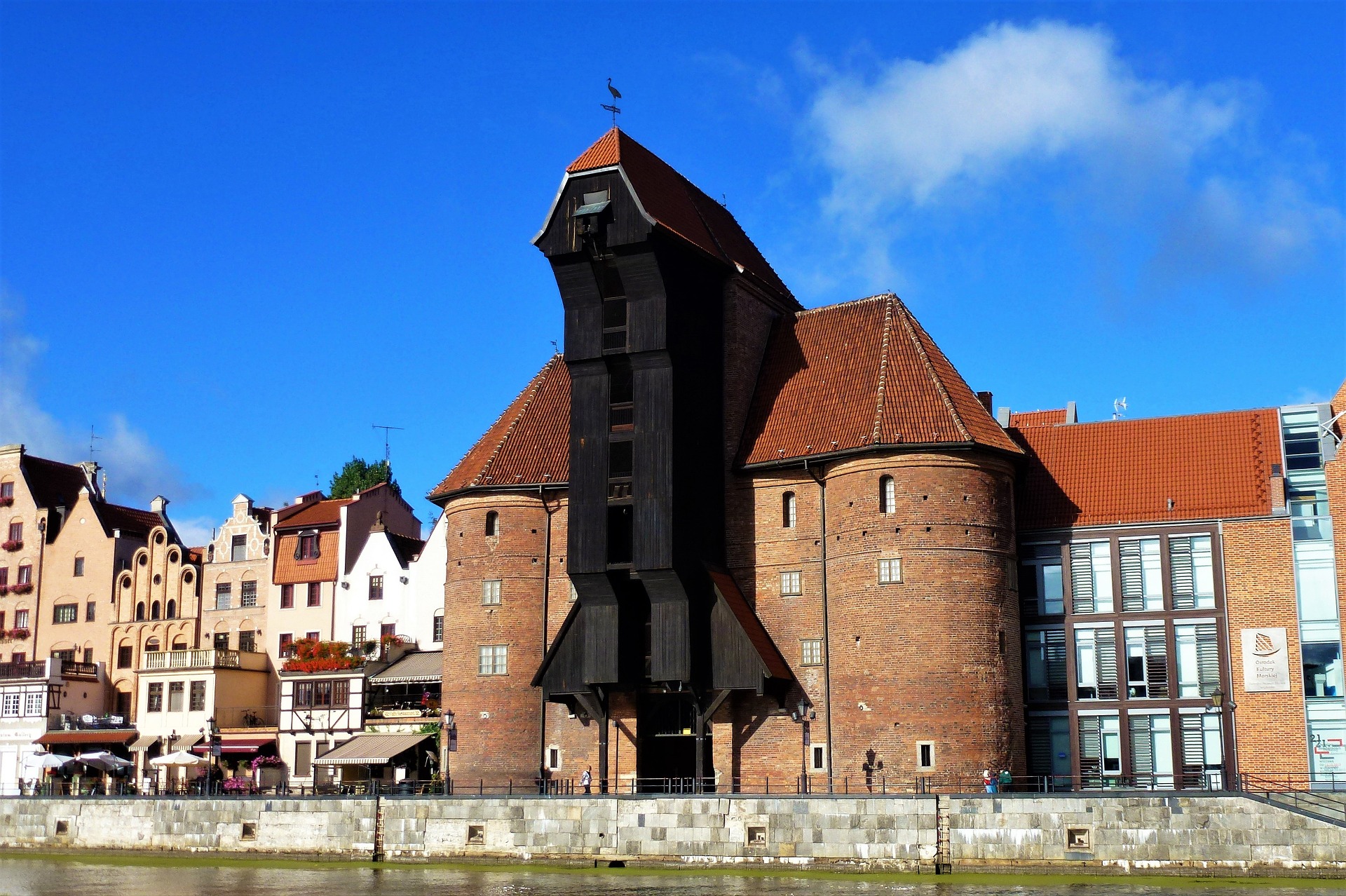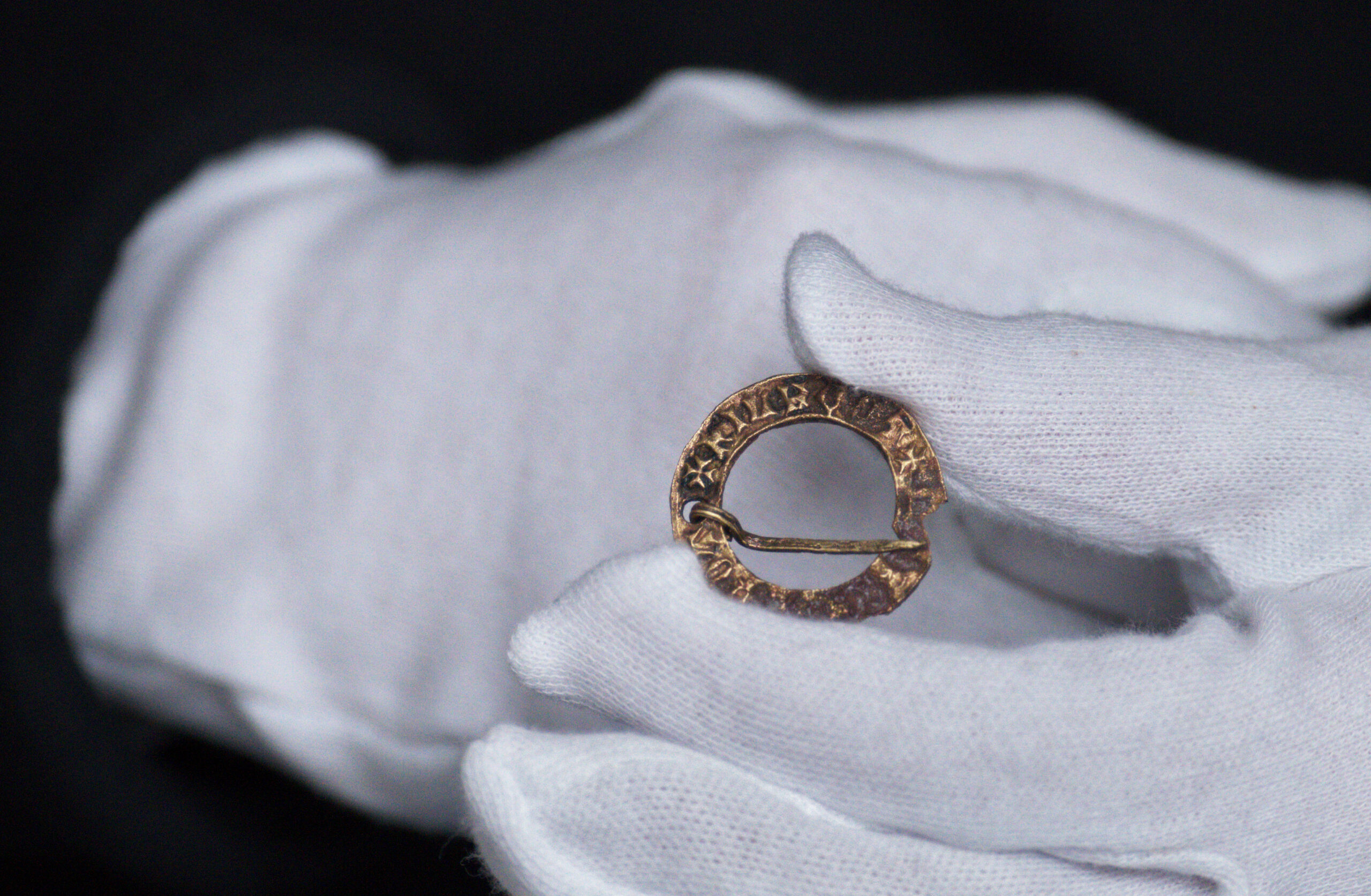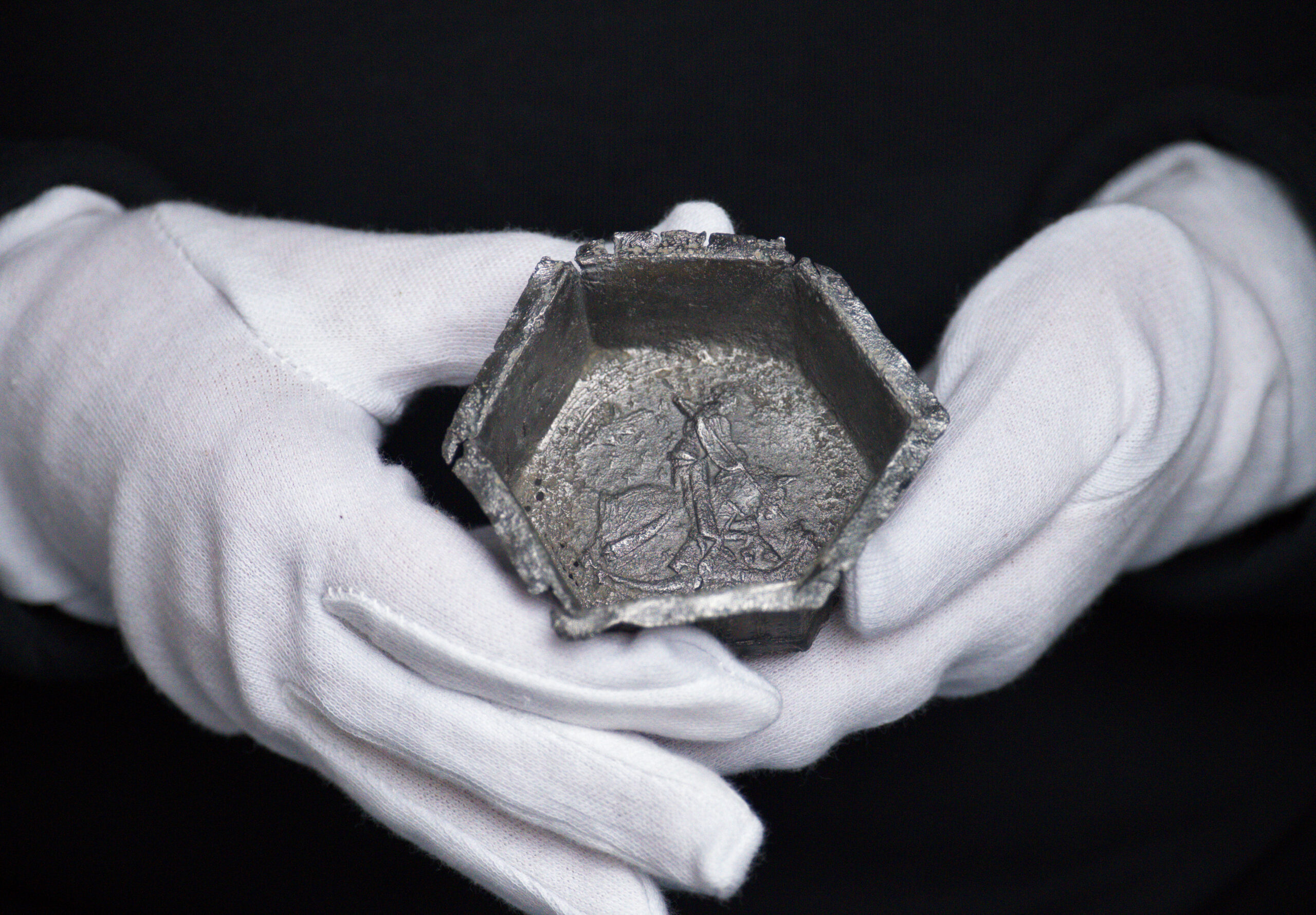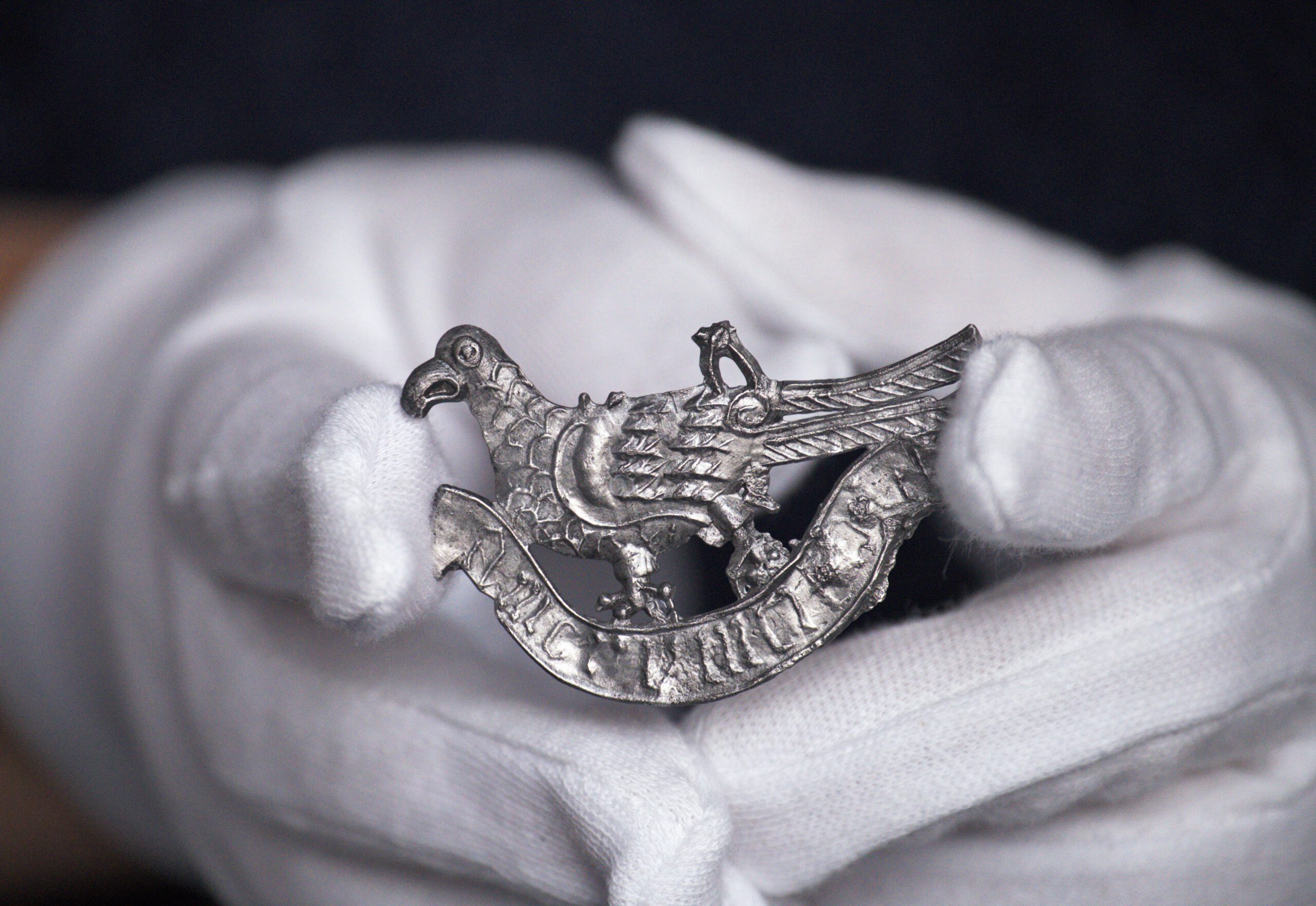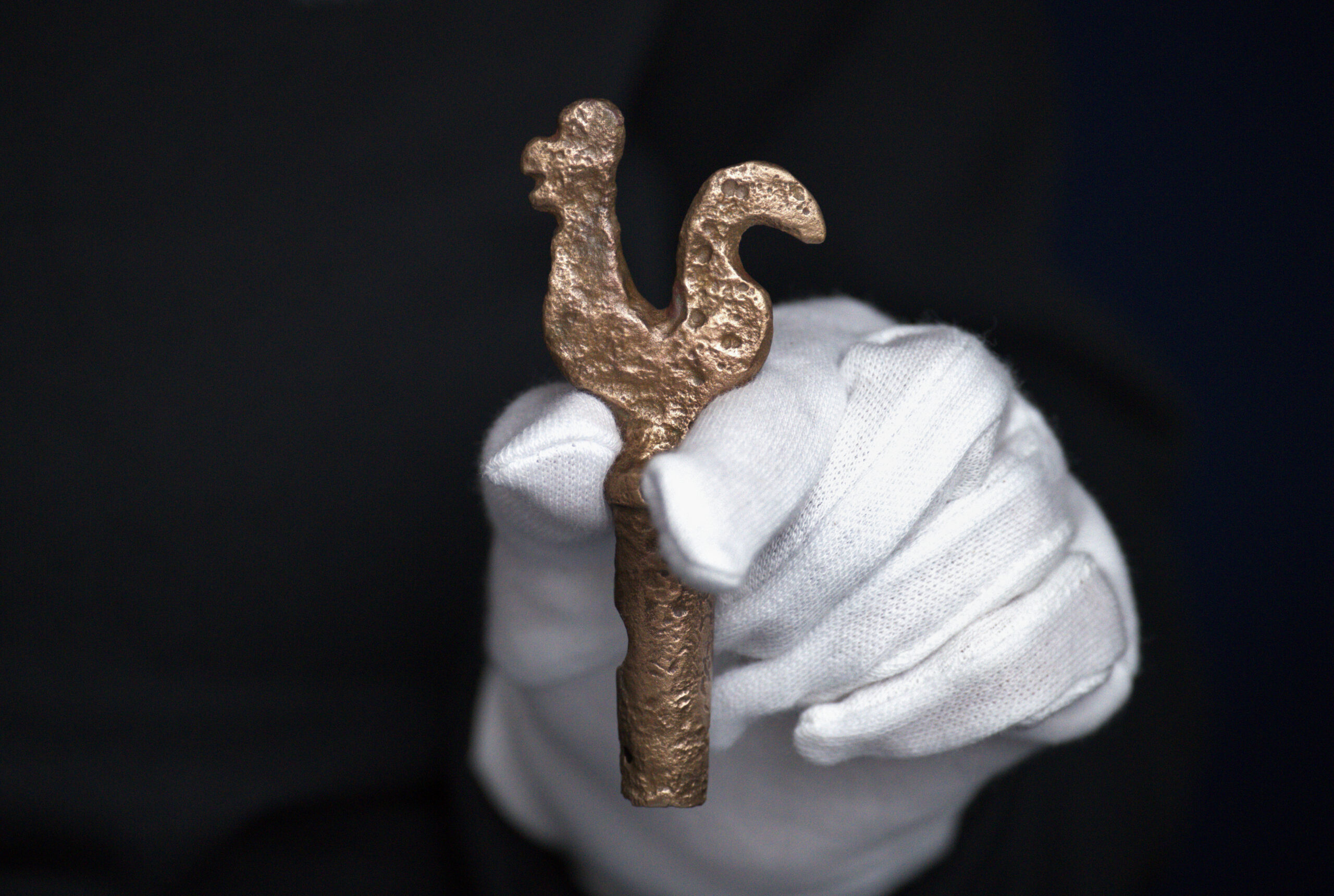The renovation of the historic Żuraw in Gdańsk took more than three years and was completed in April. The restored interiors and the new permanent exhibition can already be viewed. During the archaeological work, many historical objects were found. Among the finds are even glass vessels.
The found objects were cleaned and displayed. So you can see with your own eyes what treasures have lain a few metres underground for years. The objects were found during renovation work on the foundations of the building. They were found in a layer of earth excavated in the first half of the 15th century, when the ground was prepared for the construction of the masonry Crane. Another was found in a layer of earth dating from the period of strengthening the foundations and draining the cellars.
The exhibits can be viewed at the National Maritime Museum in Gdańsk. Of the nearly one hundred discovered objects, several dozen are on display. Among the most valuable ones is a copper alloy clasp in the form of a circle. The frame bears a German inscription in Gothic majuscule HILF GOT MARIA BEROT (God help us, Mary advise us). Museum experts estimate that it may date from the 13th or 14th century.
Another valuable object is a six-sided vessel on three legs. Inside, one can see an image of Saint George on horseback slaying a dragon. The outer walls depict pairs of apostles. There are about 20 similar vessels with lids in Europe.
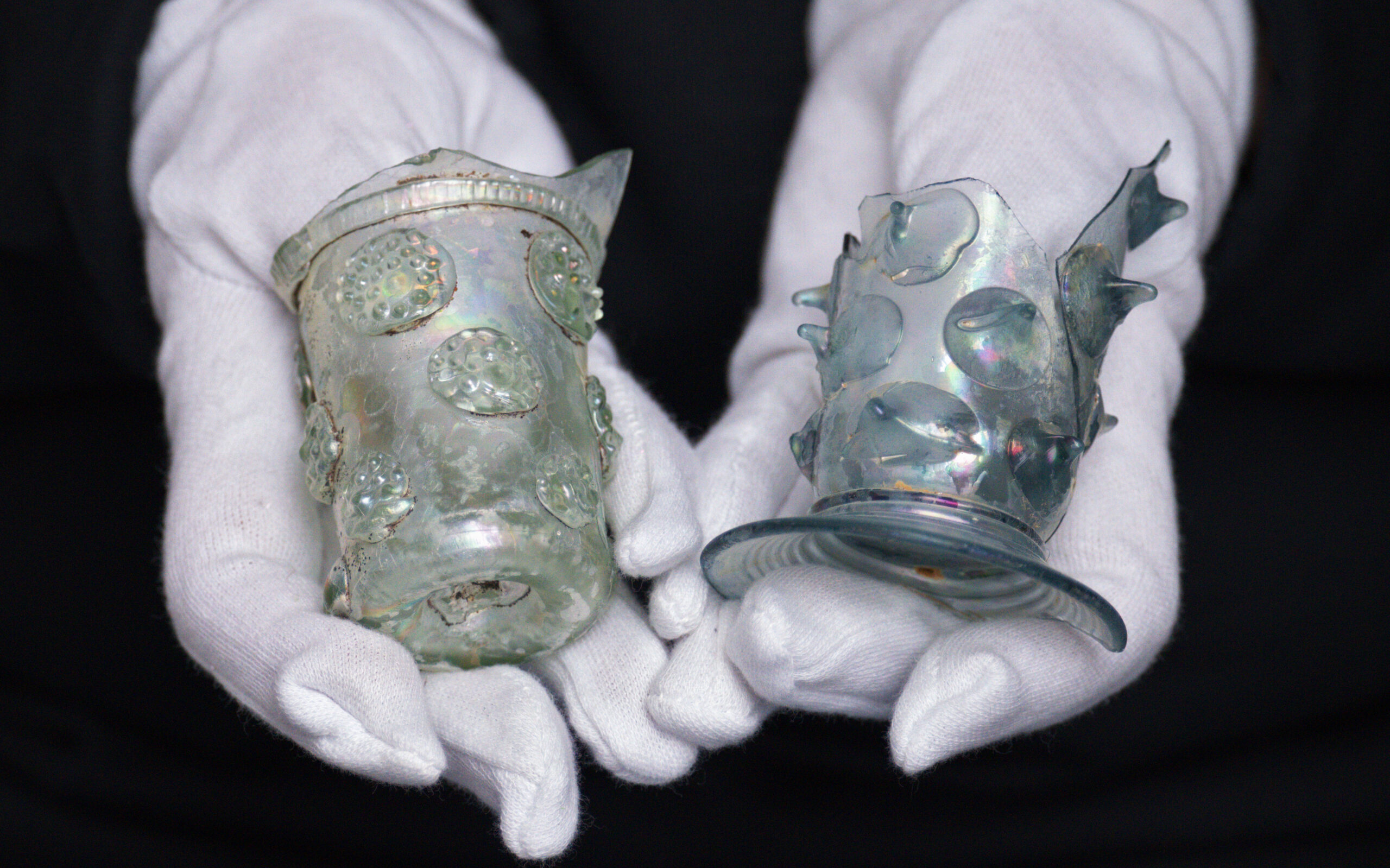
Green glass goblets with decorations are an interesting example of design from centuries ago. The vessels from the turn of the 16th and 17th centuries were used for drinking Rhine wine and were produced by workshops in the Netherlands and Germany. Their ornate nature meant that they were often depicted in paintings by Flemish painters.
There are more vessels found. A saucer made of cream faience, plates or bowls made of Chinese porcelain are valuable objects. The latter were shipped to Gdansk together with tea shipments from Amsterdam, Gothenburg and English ports.
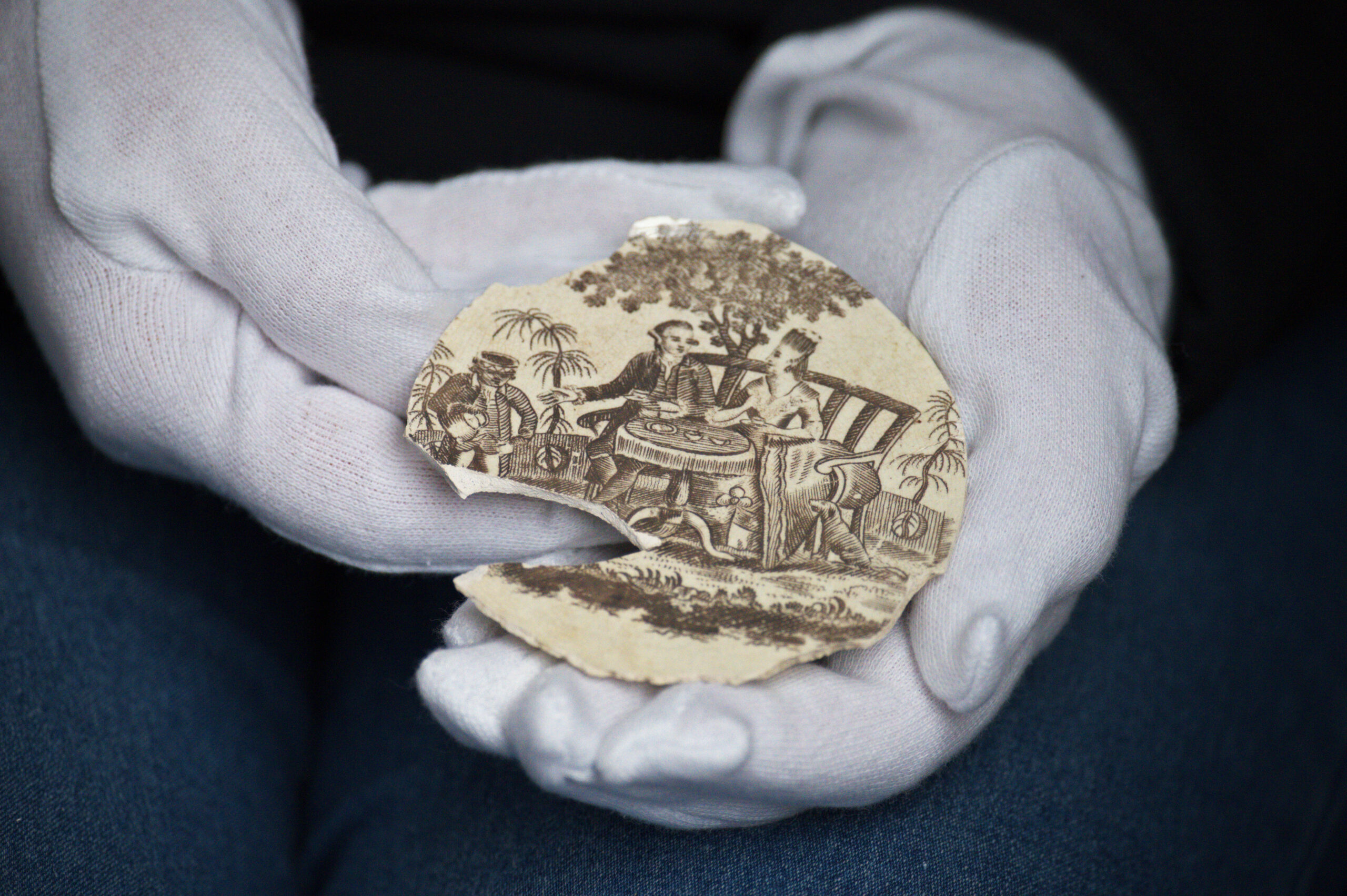
It was probably with such a cargo that the tea service arrived in Gdańsk, from which a fragment of a saucer made of cream faience decorated with a printed Tea Party scene has survived. The dish belongs to the Queens ware collection – a series of vessels produced in the 1870s at Joshua Wedgwood’s factory in Staffordshire and under the special patronage of Queen Charlotte – wife of George III, King of England – writes Dr Anna Rembisz-Lubiejewska on the website of the National Maritime Museum in Gdańsk.
The valuable objects can now be viewed in Żuraw. The historic building was opened after renovation on 30 April. The Żuraw is open on Tuesdays (2-8 pm), Wednesdays (1-6 pm), Thursdays, Fridays, Saturdays and Sundays (11 am-6 pm). Be sure to check the opening hours on the NMM website before visiting, they are subject to change.
source: National Maritime Museum in Gdańsk(https://nmm.pl)
Read also: Pottery | Ceramics | Gdańsk | Monument | Curiosities | History | whiteMAD on Instagram

